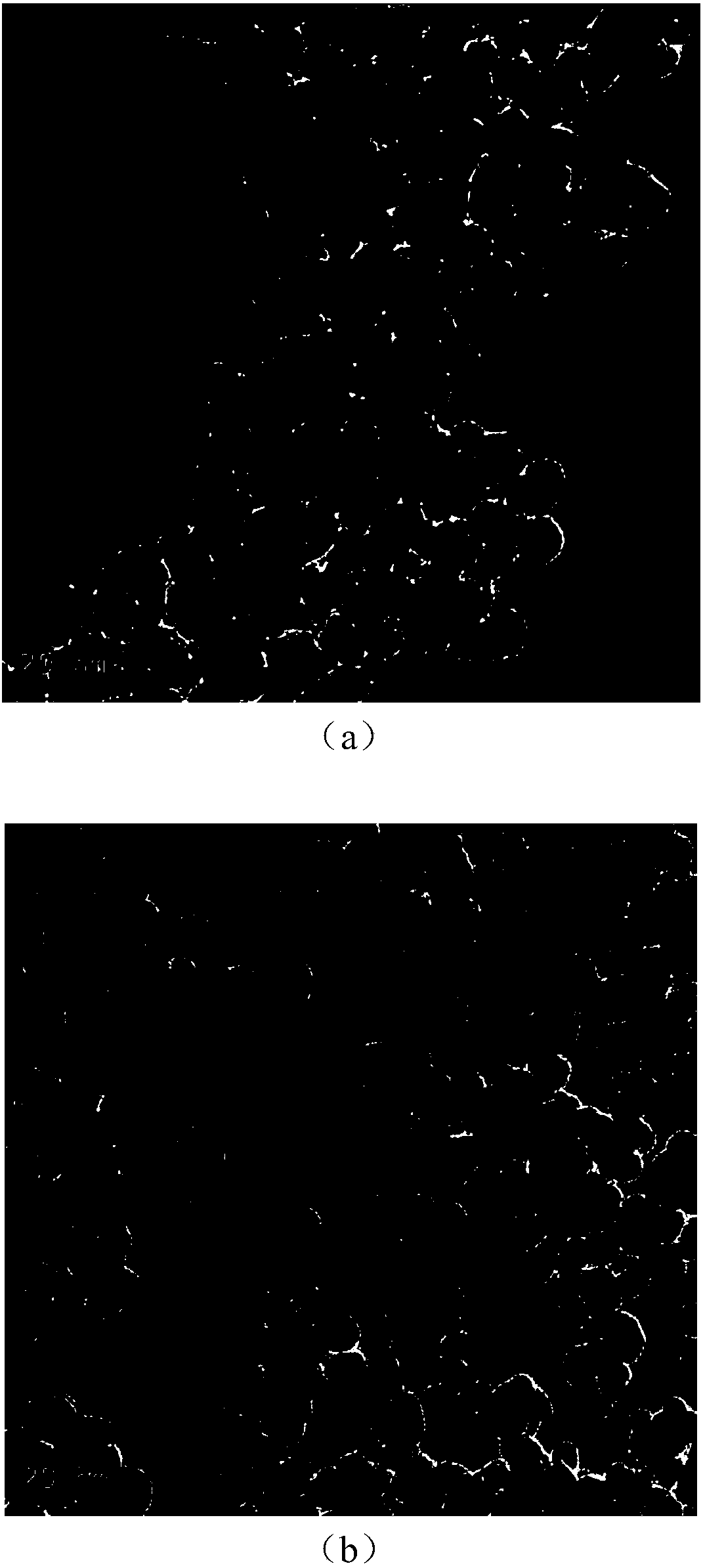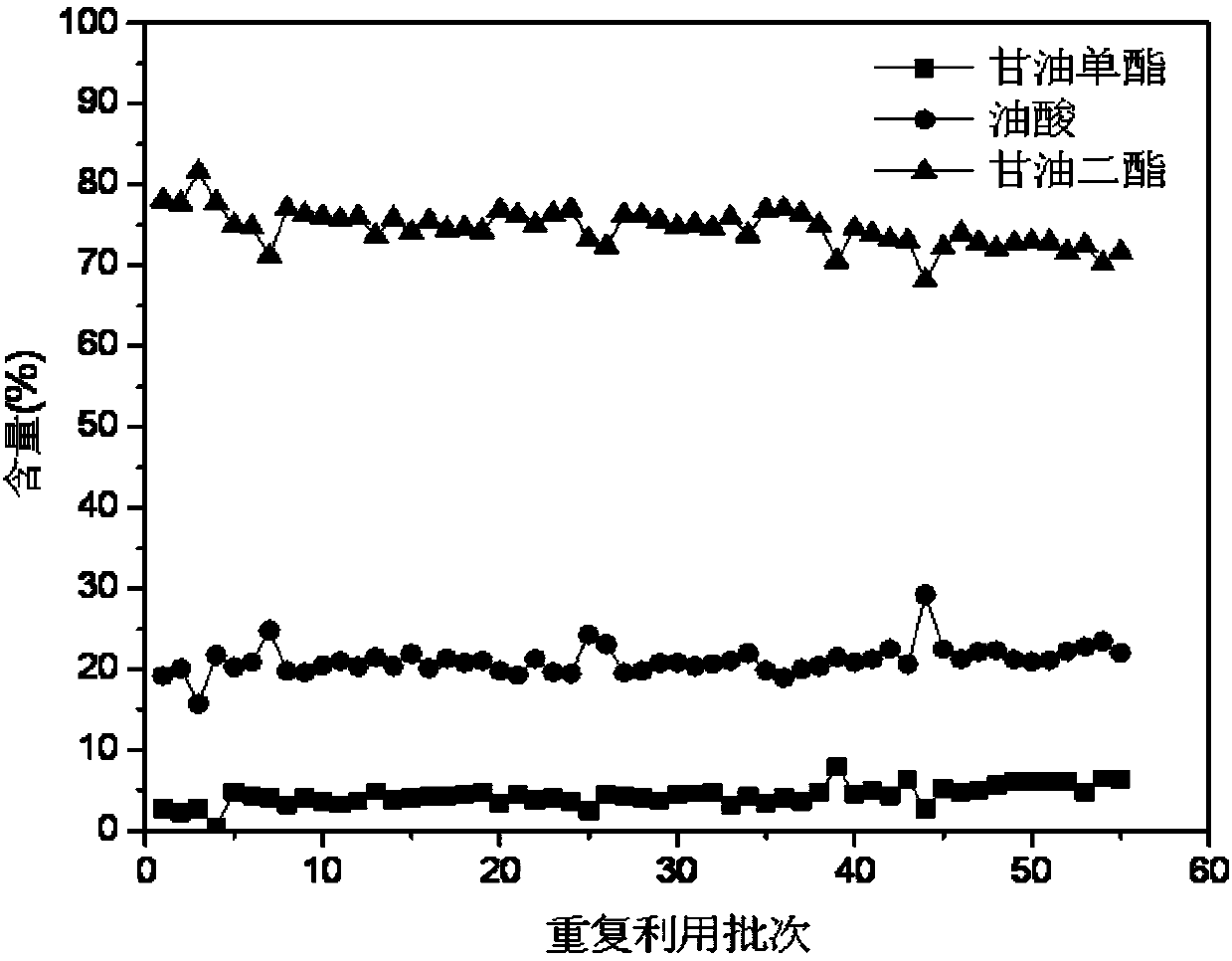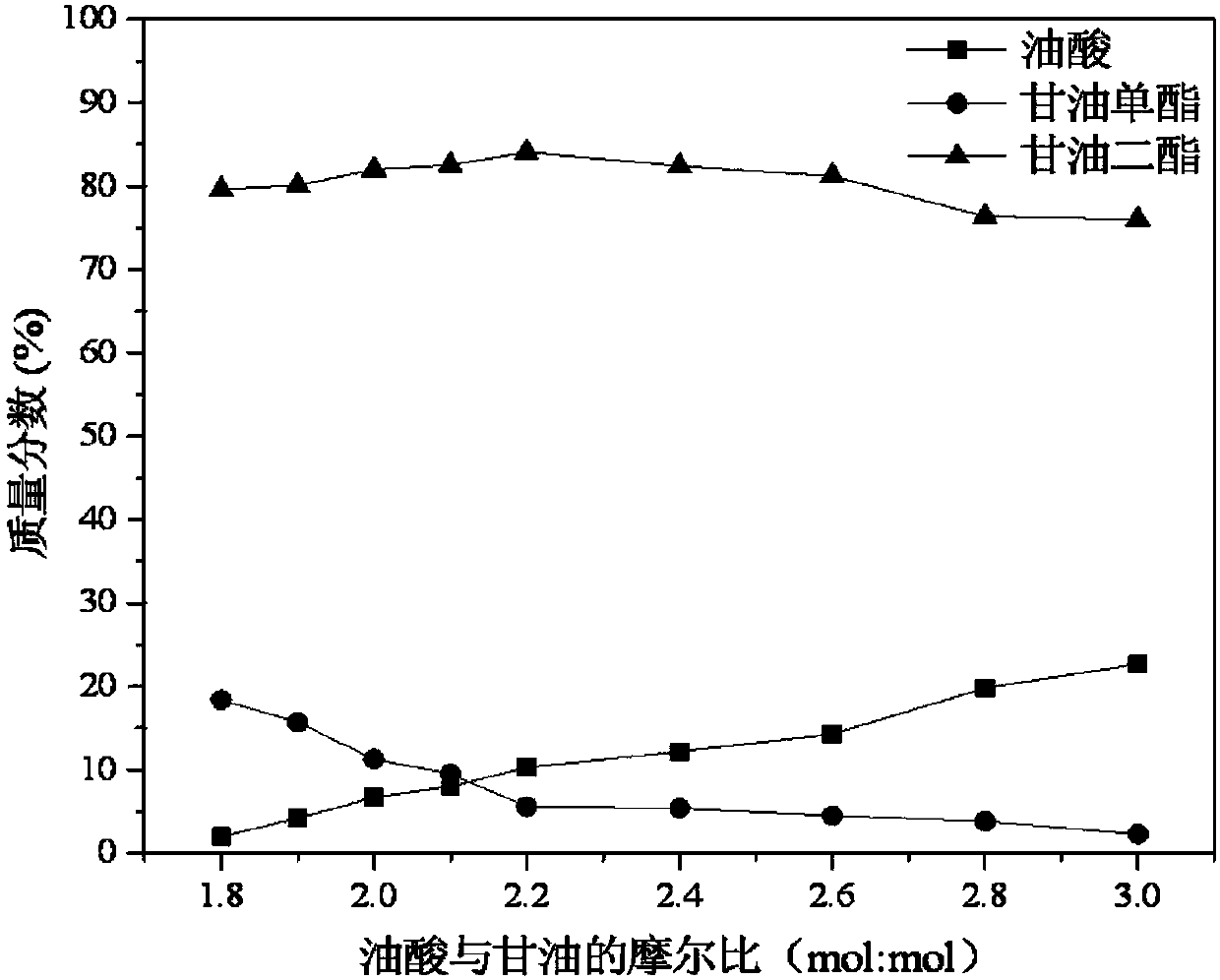Method for producing 1,3-diglyceride by immobilized lipase
A technology for immobilizing lipase and diglyceride, applied to biochemical equipment and methods, enzymes immobilized on or in inorganic carriers, etc., can solve problems such as difficult to obtain high-purity diglyceride and difficult reaction , to achieve the effect of simple separation and purification, simple recovery and high purification efficiency
- Summary
- Abstract
- Description
- Claims
- Application Information
AI Technical Summary
Problems solved by technology
Method used
Image
Examples
Embodiment 1
[0087] Example 1 Nano Fe 3 O 4 Synthesis
[0088] 11.75g FeCl 3 ·6H 2 O, 5.97g FeSO 4 ·7H 2 O was dissolved in 250ml of deionized water, heated to 80°C, and 14ml of ammonia was quickly added under rapid stirring, and kept for 2h under the protection of nitrogen. Wash the precipitate with deionized water until the aqueous solution is neutral to obtain Fe 3 O 4 . Its transmission electron microscope is like figure 1 (a) Shown.
[0089] Will get Fe 3 O 4 Add 500ml of 80% ethanol, slowly add 20ml of APTES (3-aminopropyl-triethoxysilane) at 30℃, react for 12h at room temperature, wash with deionized water and ethanol three times to obtain aminated Fe 3 O 4 . Aminated Fe 3 O 4 Add to 100ml 2% glutaraldehyde solution, react at 30℃ for 2h, wash and freeze-dry to get about 5g Fe with aldehyde groups on the surface 3 O 4 . Its transmission electron microscope such as figure 1 (b) Shown.
[0090] by figure 1 (a) and figure 1 (b) It can be seen that after the ferroferromagnetic particles ar...
Embodiment 2
[0091] Example 2 Screening of Lipase
[0092] Weigh 0.115g glycerol (1.25mM), 0.76g oleic acid (2.5mM), 10mg lipase to be screened (the amount of liquid enzyme added is 10μl), place it in a 2ml flat-bottom centrifuge tube, add about 0.23g (oleic acid) 5 times the mass of water produced by the complete reaction) activated 4A molecular sieve and a 2×5mm jujube-shaped magnet.
[0093] The reaction temperature was controlled to 30°C by a constant temperature water bath, and the reaction was stirred magnetically for 12 hours. After the reaction, the reaction was centrifuged, and 50 μl of the upper layer sample was taken and analyzed by liquid chromatography. The lipase with catalytic activity in the solvent-free system and the highest selectivity to the 1,3 hydroxyl groups of glycerol was obtained.
[0094] The screening results are as follows:
[0095] Table 1 Catalytic performance of different lipases
[0096]
[0097] It can be seen from Table 1 that the oleic acid conversion rate of th...
Embodiment 3
[0098] Example 3 Immobilized Lipase
[0099] Take 1g Rhizopus oryzae lipase enzyme powder (protein content is about 10.5%) dissolved in 30ml pH 6.5 phosphate buffer (100mM), add 0.3g Tween 80, stir to dissolve the enzyme powder, and then add 2g activated Ferric oxide was stirred for 4 hours at 20°C, and the immobilized enzyme obtained was magnetically separated and washed with buffer for several times to wash away unbound proteins and Tween 80.
PUM
 Login to View More
Login to View More Abstract
Description
Claims
Application Information
 Login to View More
Login to View More - R&D
- Intellectual Property
- Life Sciences
- Materials
- Tech Scout
- Unparalleled Data Quality
- Higher Quality Content
- 60% Fewer Hallucinations
Browse by: Latest US Patents, China's latest patents, Technical Efficacy Thesaurus, Application Domain, Technology Topic, Popular Technical Reports.
© 2025 PatSnap. All rights reserved.Legal|Privacy policy|Modern Slavery Act Transparency Statement|Sitemap|About US| Contact US: help@patsnap.com



